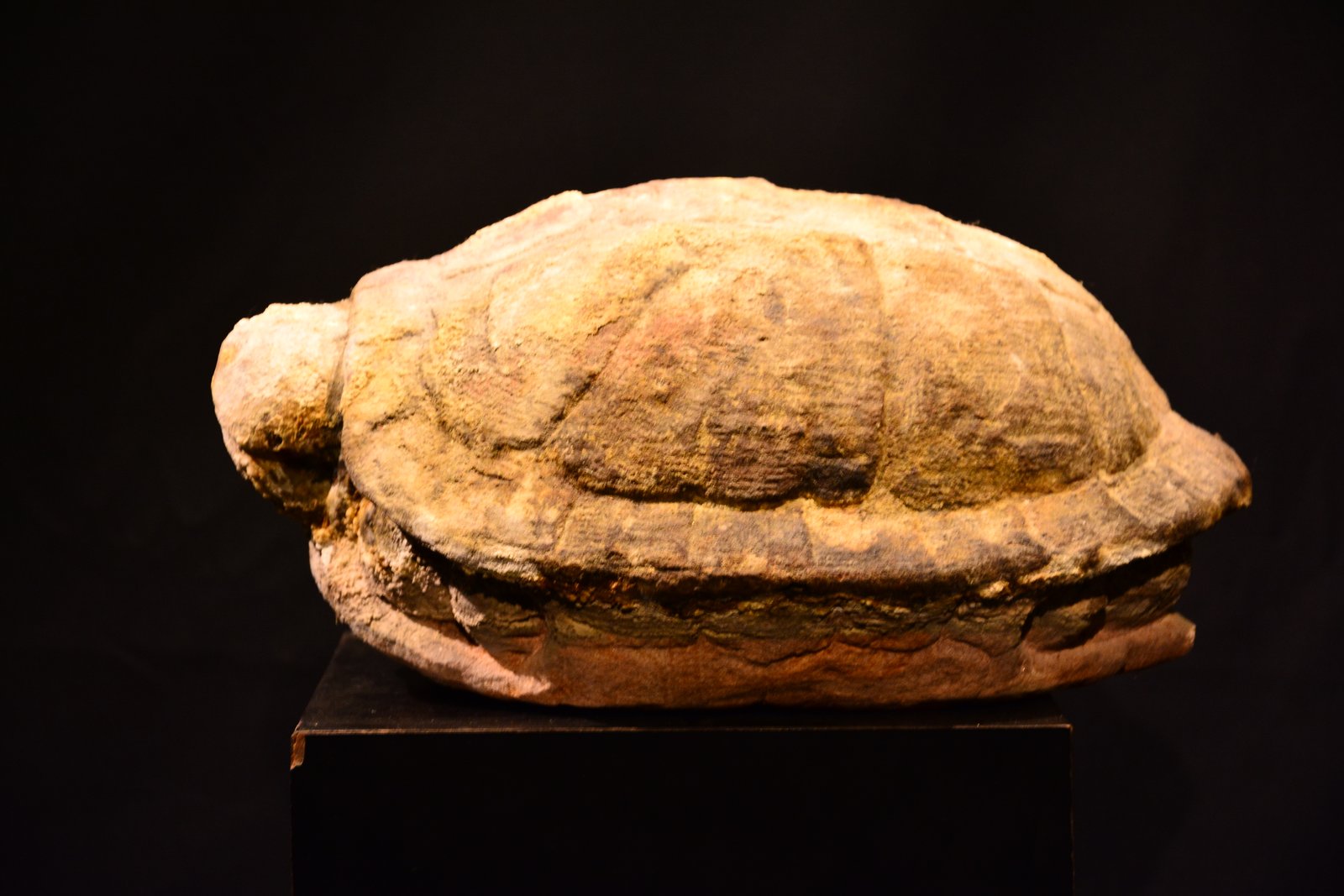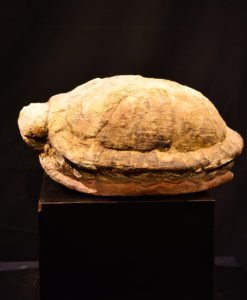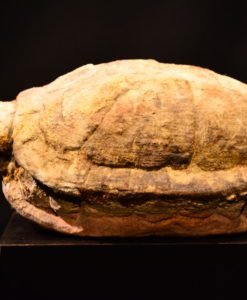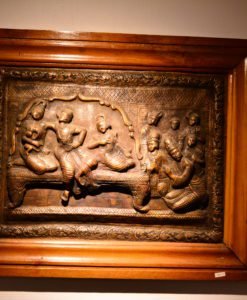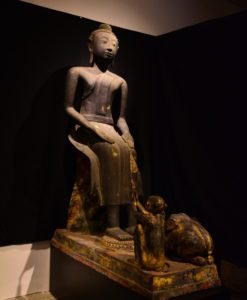Sacred Tortoise Statue – Khmer Angkor Period Sandstone Sculpture (12th–13th Century)
This exquisite sandstone sculpture of a tortoise, believed to date from the late Angkor period (12th–13th centuries CE), represents a rare convergence of Khmer naturalism and cosmic symbolism. Sculpted in the round and intended to be viewed from all sides, the form subtly emerges from its shell—conveying not just the physical likeness of a tortoise but also its sacred metaphysical roles in Hindu-Buddhist cosmology.
ITEM DESCRIPTION
Essence of the Object
The piece embodies the Khmer belief in sacred animals as spiritual and cosmic agents—a worldview woven deeply into the temple art and architecture of Angkor. Despite the erosion of its finer surface details, the remaining lines, the still-prominent carapace, and the visible ancient patina all testify to its age and religious significance.
Cultural and Symbolic Significance
In the Hindu-Buddhist context of Angkor, the tortoise is not merely an animal. It serves as a cosmic foundation and symbol of stability. In Hindu mythology, the Kurma avatar of Vishnu—a tortoise—carries the churning rod of the ocean of milk in the foundational myth of the world (Huntington, 1985). This iconography was widely recognized in the Khmer empire, particularly in the Bayon and Baphuon temples, where such cosmological stories were carved into sandstone.
In Buddhist traditions, which became increasingly syncretized with Hindu beliefs in late Angkor, the tortoise signified longevity, meditation, and the Earth’s stillness (Jessup, 1997). Sacred animals such as nagas, lions, and tortoises were often placed within temple compounds, at water reservoirs, or as offering pedestals, where their forms subtly anchored the divine presence to the earthly plane.
This sculpture may have once rested near a baray (temple reservoir) or been used in ritual spaces within the vast Angkor temple networks.
Craftsmanship and Artistic Details
Though time has softened much of the surface, the shell remains clear and prominent—an aspect the Khmer artists took care to render even when the rest of the figure fades into simplicity. The surface reflects centuries of weathering, and the smoothened contours suggest a sculpture once exposed to elements, perhaps even ritual bathing or anointing in water rituals.
No flat backing is present, which supports the interpretation of this as a fully sacred object meant to be viewed from all sides—not as an architectural relief but as a freestanding votive form.
Condition and Collectible Value
The sculpture stands in solid condition with no visible cracks, despite the erosion of its more detailed features. Its aged patina and naturalistic modeling are in harmony with documented Khmer sandstone works, and the absence of restoration or modern base enhances its authentic collector value.
For discerning collectors, museums, or spiritual connoisseurs, this sculpture offers both a visceral connection to Southeast Asian cosmology and a tangible link to the spiritual aesthetic of the Khmer Empire.
References:
-
Jessup, H.I. (1997). Art & Architecture of Cambodia. New York: Rizzoli International.
-
Huntington, S.L. (1985). The Art of Ancient India: Buddhist, Hindu, Jain. Weatherhill.
-
Rooney, D. (2008). Angkor: Cambodia’s Wondrous Khmer Temples. Bangkok: River Books.
-
Freeman, M. & Jacques, C. (2006). Ancient Angkor. Bangkok: River Books.
Origin: Cambodia
Period: 12th – 13th Century
PRODUCT DETAIL
Medium: Sandstone
Dimensions:
Height 14 cm
Length 28 cm
Wide 23 cm
Condition Report: Corroded by time
Please keep in touch for Price and more information: Mallika1013@gmail.com






